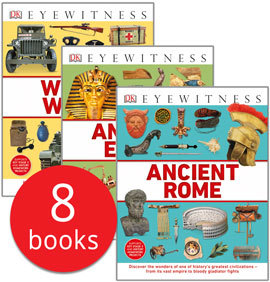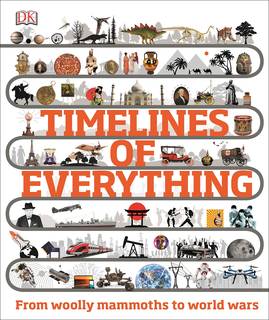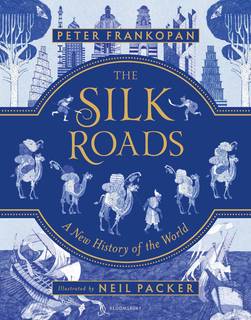Helen learned her first historical date at the end of last year: 1666. Her school teaches its curriculum (except for mathematics) around topics, and the topic for Year 1's first half-term was the Great Fire of London. I suspect she remembers the date largely because one of the activities they did was singing the song "September 1666".
She is still very hazy about dates and chronology, however: she might have learned the date of the Great Fire of London, but at the same time she was asking me whether that happened before or after the Second World War. She has a vague feeling for twentieth century chronology, anchored by family history.
The "Aims" of the National Curriculum's Key stage 1 and 2 "History programmes of study" seem wildly ambitious (more suitable for the full curriculum to Key Stage 4), but the "Subject content" for Key stage 1 seems pretty sensible:
Subject content Key stage 1
Pupils should develop an awareness of the past, using common words and phrases relating to the passing of time. They should know where the people and events they study fit within a chronological framework and identify similarities and differences between ways of life in different periods. They should use a wide vocabulary of everyday historical terms. They should ask and answer questions, choosing and using parts of stories and other sources to show that they know and understand key features of events. They should understand some of the ways in which we find out about the past and identify different ways in which it is represented.
In planning to ensure the progression described above through teaching about the people, events and changes outlined below, teachers are often introducing pupils to historical periods that they will study more fully at key stages 2 and 3.
Pupils should be taught about:
- changes within living memory. Where appropriate, these should be used to reveal aspects of change in national life
- events beyond living memory that are significant nationally or globally [for example, the Great Fire of London, the first aeroplane flight or events commemorated through festivals or anniversaries]
- the lives of significant individuals in the past who have contributed to national and international achievements. Some should be used to compare aspects of life in different periods [for example, Elizabeth I and Queen Victoria, Christopher Columbus and Neil Armstrong, William Caxton and Tim Berners-Lee, Pieter Bruegel the Elder and LS Lowry, Rosa Parks and Emily Davison, Mary Seacole and/or Florence Nightingale and Edith Cavell]
- significant historical events, people and places in their own locality.
The important thing is, surely, picking material that the children find engaging and involving, which will vary from school to school and class to class. Schools seem to have a fair bit of flexibility here, since Ofsted and the government obsess about mathematics and literacy, not history. (Though that may be changing with a new focus by Ofsted on curriculum.)
That said, the "subject content" does, especially in Key Stage 2, seem rather focused on Britain and ancient history. Presumably the latter is to "lay the foundations" for later history in later school years, though the linking of "earliest history" with the earliest years of school has always seemed more magical to me than rational. This seems like a good reason for looking, at home, at regions and eras not covered by school.
Three of Helen's birthday presents from me were history books. The first is a set of eight DK Eyewitness books — Ancient Egypt, Ancient Greece, Ancient Rome, The Tudors, Shakespeare, The Victorians, World War I and World War II, which I picked up on sale. These have been written to "support National Curriculum Key Stage 2 topics" and I'm thinking could be put aside till then (we haven't opened them yet). I note that there appear to be (at least in English) no books of this kind for children on the history of Indonesia or Southeast Asia, and certainly not in this kind of series from DK or Usborne.
The second is another, recent DK book, Timelines of Everything, which is gloriously illustrated and has some engaging timeline designs. This covers a nice variety of topics: the 150 double-page timelines include "Ancient Indian Empires" and "Kingdoms of Southeast Asia" along with more predictable historical topics, but also many on the history of technology and science, such as "Ships", "Plagues and Epidemics" and "Chemistry". With the graphics dominating and the text limited, there's not much to these timelines, and the selection of items on them is idiosyncratic. The "Story of Music" timeline, for example, begins with Indian ragas, gamelan (dated to 230 AD, its mythological creation date), Japanese court music, European religious music, and Chinese opera, proceeds with the Renaissance, Bach, Mozart, Beethoven and Debussy, before meandering to jazz, Umm Kulthun, rock-and-roll, the Beatles, Beyoncé and Kerry Andrew. This makes the book great for exploratory browsing, but next to useless as a reference — there are also an unfortunate number of basic factual errors (enough to deserve a post of their own).
The third book is Peter Frankopan's The Silk Roads: A New History of the World – Illustrated Edition, which is an abridgement for children, not an illustrated version of his full history of the same name. This has lovely illustrations, but also chapters with much longer chunks of text than the other books, making it more challenging: I am reading this to Helen instead of getting her to read it herself, so she can concentrate on the subject material. One can certainly quibble over Frankopan's choice of material, but an attempt to recount the history of Eurasia as a whole, from a central perspective, is really unusual in a children's history.
Historiography is interesting at this age. In some ways concepts often left out of popular histories for adults seem more accessible than chronologies and dates and extended narratives. Helen may be unsure about ordering four digit numbers, but she has no trouble with the idea that different accounts of the same events can exist, and that they are motivated by the interests of those writing them. Athena features so prominently in Greek mythology because so many of our sources are Athenian, different tellings of the Ramayana highlight the interests of those writing them (I've told her there are versions where Ravana is a hero, though we haven't read any), and so forth. I've also tried to explain something about the complexity of sources: the differences between oral traditions and written texts, for example, and the temporal ordering of versions, even if she's hazy about the difference between Lucy Coats' Atticus the Storyteller coming half a century after the D'Aulaires' Book of Greek Myths and the "standard" Akkadian Gilgamesh coming a millennium after the older Sumerian poems. And of course a lot of this is at the interface between history and mythology, which centres epistemological issues. She's aware that even school history books (such as the ones mentioned above) can be wrong, and that they often present narrow single perspectives on contested or complex topics.



